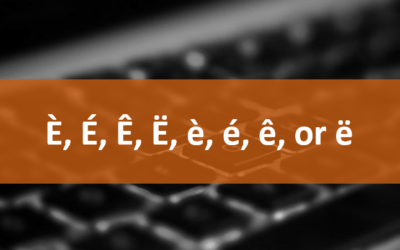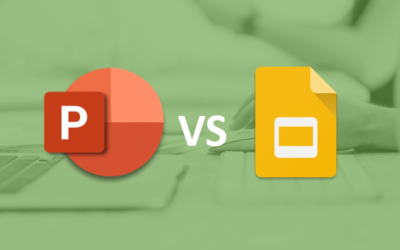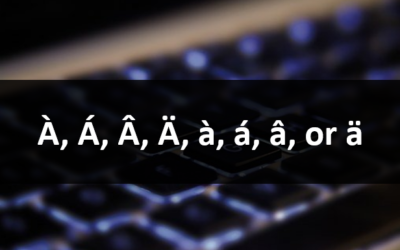Microsoft Excel: Accessible Excel Documents
Excel Training Series | Level 3
Course Details
Duration: 1 day (9 am – 4 pm)
Microsoft® Excel® Versions: 2010 | 2013 | 2016 | 2019 | 365 (Windows)
Delivery Methods (Instructor-led): Live classroom (LC) | Virtual classroom (VC)
Course Dates: TBA (Instructor-led virtual classroom) | View schedule ![]()
Course Fee: $245 CDN per person + HST (Virtual classroom), $275 CDN per person + HST (Bring your own device for live classroom courses) or $325 CDN per person + HST (Avantix Learning provides device for live classroom courses)*
Timing: Public scheduled courses run from 9:00 am to 4:00 pm (Eastern Time).
Virtual classroom courses: Our instructor-led virtual classroom courses are delivered in a virtual classroom environment. Students will be sent a virtual classroom invitation prior to the course.
Live classroom courses: Our instructor-led live classroom (in-person) courses are held in downtown Toronto at the Toronto Star Building, 1 Yonge Street, Suite 1801. Some courses are also held at an alternate downtown Toronto location.
Custom training: This course may be delivered at your site or ours as an instructor-led or virtual classroom solution. Contact us at info@avantixlearning.ca for more information including savings for custom group training.
Course Overview
In this course, students will learn to create accessible Excel documents using best practices when creating Excel worksheets for users with disabilities. Various tools will be used in Excel to create accessible workbooks including appropriate formatting, tools for navigation, well-designed tables, hyperlinks and graphics such as charts with alternative text. Students will run the accessibility checker and save a file as a PDF (Portable Document Format) or in an alternative format.
Prerequisite: Microsoft Excel: Introduction or equivalent knowledge and skills.
Location and timing: Public scheduled courses are held in downtown Toronto and run from 9:00 am to 4:00 pm (Eastern Time).
Related training: View all Microsoft Excel courses >
Included in this course
- Comprehensive course manual (100+ pages)
- Keyboard shortcuts quick reference
- Sample and exercise files
- Refreshments (for classes conducted in Avantix Learning classrooms)
- Certificate of completion
- Follow-up email support
Course Outline
Key Concepts for Accessible Excel Documents
- Why make Excel files accessible
- How accessibility legislation impacts design of worksheets and workbooks
- Basics of accessibility for users with different types of disabilities
- Understanding how screen readers read digital Excel workbooks
- Integrating best practices when designing accessible files
- Common issues in Excel workbooks
- Naming sheets
Setting up an Accessible Excel Workbook
- Conventions for file names
- Setting a document title metadata using different strategies
- Specifying a document language
Formatting Using Styles
- Formatting using cell heading styles
- Modifying cell styles
- Formatting tables using table styles
Using Naming
- Benefits of naming
- Naming cells and ranges
- Using named cells and ranges to navigate
Working with Fonts
- Selecting fonts based on different criteria to ensure readability
- Best practices in terms of text formatting
- Recommended minimum font sizes
- Issues with specific fonts
Working with Colour
- Considerations when choosing colours
- Issues with colour
- Ensuring sufficient contrast
- Accessible sensory characteristics
- Selecting a colour theme
- Strategies for applying colours in Excel
Working with Images, Charts and Other Non-Text Elements
- Key concepts when working with non-text elements such as images, shapes and charts in accessible documents
- Issues with reading order
- Importance of including alternative text
- Writing alternative text
- Strategies when descriptions are too complex
- Issues with watermarks
- Key concepts when working with charts
Inserting and Formatting Tables
- Recommendations when working with tables
- Common issues with tables
- Formatting with table styles for accessibility
- Specifying a header row
- Including alternative text for tables
Navigating with Hyperlinks
- Inserting hyperlinks
- Best practices for accessibility when using hyperlinks
- Testing hyperlinks
Reading Order and Assistive Technology
- Understanding the importance of reading order
- Reading order issues
- Strategies to check and control reading order
Using Math Equations
- Creating accessible math equations
Creating Accessible Excel Forms
- Key concepts when creating forms in Excel for accessibility
- Alternatives to Excel for form creation
Running the Accessibility Checker
- Checking the document for accessibility issues using the Accessibility Checker in Excel
- Limitations of the Accessibility Checker
Converting an Excel File to PDF or HTML
- Saving a document as a PDF (Portable Document Format) natively
- Specifying options during the saving/export process
- Ensuring the final output includes tags
- Saving a PDF using Acrobat Pro (for users with Acrobat Pro)
- Viewing the PDF file in Acrobat Pro or Reader (for users with Acrobat Pro)
- Saving an Excel file in HTML format
Register Now for a public course at our downtown Toronto location at 1 Yonge Street, Suite 1801 (Toronto Star Building), Toronto, Ontario, Canada.
Do you need more information? Contact us!
Related training: View Accessible Documents courses >
To request this page in an alternate format, contact our staff.
*Prices subject to change.
Our instructor-led courses are delivered in virtual classroom format or at our downtown Toronto location at 18 King Street East, Suite 1400, Toronto, Ontario, Canada (some in-person classroom courses may also be delivered at an alternate downtown Toronto location). Contact us at info@avantixlearning.ca if you'd like to arrange custom instructor-led virtual classroom or onsite training on a date that's convenient for you.
Copyright 2024 Avantix® Learning

Custom training
Register now for a public scheduled course or contact us at info@avantixlearning.ca for more information about any of our courses or to discuss custom training options (virtual classroom or live classroom).
Related courses
Microsoft PowerPoint: Introduction
Microsoft PowerPoint: Intermediate / Advanced
Microsoft Excel: Intermediate / Advanced
Microsoft Word: Accessible Word Documents
You may like
How to Insert or Type E with an Accent Mark in PowerPoint (È, É, Ê, Ë, è, é, ê, or ë)
You can insert or type e with an accent mark in PowerPoint using built-in tools or keyboard shortcuts (including Alt code shortcuts). The letter e can be inserted with an accent in both upper or lower case in text boxes or placeholders on slides, the slide master or layouts. The following are common accents in upper or lower case – È, É, Ê, Ë, è, é, ê, or ë.
How to Fade a Picture or Part of a Picture in PowerPoint (Using a Gradient)
You can fade a picture in PowerPoint by drawing a rectangle shape on top of the picture and then filling the rectangle with a gradient from opaque to transparent. This technique is often used to fade an image into the background of a slide. Since the rectangle is placed on top of the image and then text may be placed on top of the rectangle, you may need to reorder the objects.
How to Lock an Image, Shape or Other Object in PowerPoint
You can now lock an image, shape or other object in PowerPoint. Objects can be locked in Normal View or Slide Master View. Only PowerPoint 365 users can lock objects to prevent moving and resizing. This is helpful if you want to select and move other objects on the slide or prevent others from moving or resizing an object. You can lock items using the context menu or the Selection Pane.
PowerPoint vs Google Slides (Full Feature Comparison + Benefits)
When comparing PowerPoint vs Google Slides (and trying to decide which is the better choice for your needs), you will need to consider versions when you compare the two applications. In this article, we'll compare the desktop or downloadable version of PowerPoint vs Google Slides, an online program that works in a browser. The key difference then if you are comparing PowerPoint vs Google Slides is that PowerPoint must be downloaded and runs on your desktop and Google Slides runs online. The desktop version of PowerPoint is a robust, full-featured program with many advanced features. You can buy PowerPoint as a stand-alone version or as part of a Microsoft 365 subscription. If you are a 365 subscriber, new features roll out on a regular basis.
3 Ways to Insert or Type the Euro Symbol in PowerPoint (€)
You can insert the euro sign or symbol (€) in a PowerPoint presentation using built-in PowerPoint commands or keyboard shortcuts (Alt code or AutoCorrect shortcuts).
How to Show or Unhide the Quick Access Toolbar in Word, Excel and PowerPoint
In 2021 and 365 versions of Word, Excel and PowerPoint, you now have the ability to hide or unhide the Quick Access Toolbar. So if your Quick Access Toolbar seems to have disappeared, it may simply be hidden. In 2021, Microsoft also removed Undo and Redo / Repeat from the Quick Access Toolbar and moved these commands to the Home tab in the Ribbon.
You may also like
How to Insert or Type I with an Accent Mark in Word (Í, í, Ì, ì, Î, î, Ï, or ï)
You can insert or type i with an accent mark in Word using built-in tools or keyboard shortcuts (including Alt code shortcuts). The letter i can be inserted with an accent in both upper or lower case. The following are common accented characters that you can insert or type in Word in upper or lower case: grave (Ì or ì), acute (Í or í), circumflex (Î or î) and umlaut (Ï or ï).
How to Insert or Type A with an Accent Mark in Word (À, Á, Â, Ä, à, á, â, or ä)
You can insert or type a with an accent mark in Word using built-in tools or keyboard shortcuts (including Alt code shortcuts). The letter a can be inserted with an accent in both upper or lower case. The following are common accented characters that you can insert or type in Word in upper or lower case: grave (À or à), acute (Á or á), circumflex (Â or â) and umlaut (Ä or ä).
10 Word Shortcuts to Select Text Using a Keyboard
You can use several shortcuts in Word to select text in your documents using only your keyboard. When you select text, it will typically be highlighted in grey. After you select text, you can cut, copy, or delete the selected text or apply character or paragraph formatting.
Microsoft, the Microsoft logo, Microsoft Office and related Microsoft applications and logos are registered trademarks of Microsoft Corporation in Canada, US and other countries. All other trademarks are the property of the registered owners.
Avantix Learning |18 King Street East, Suite 1400, Toronto, Ontario, Canada M5C 1C4 | Contact us at info@avantixlearning.ca









